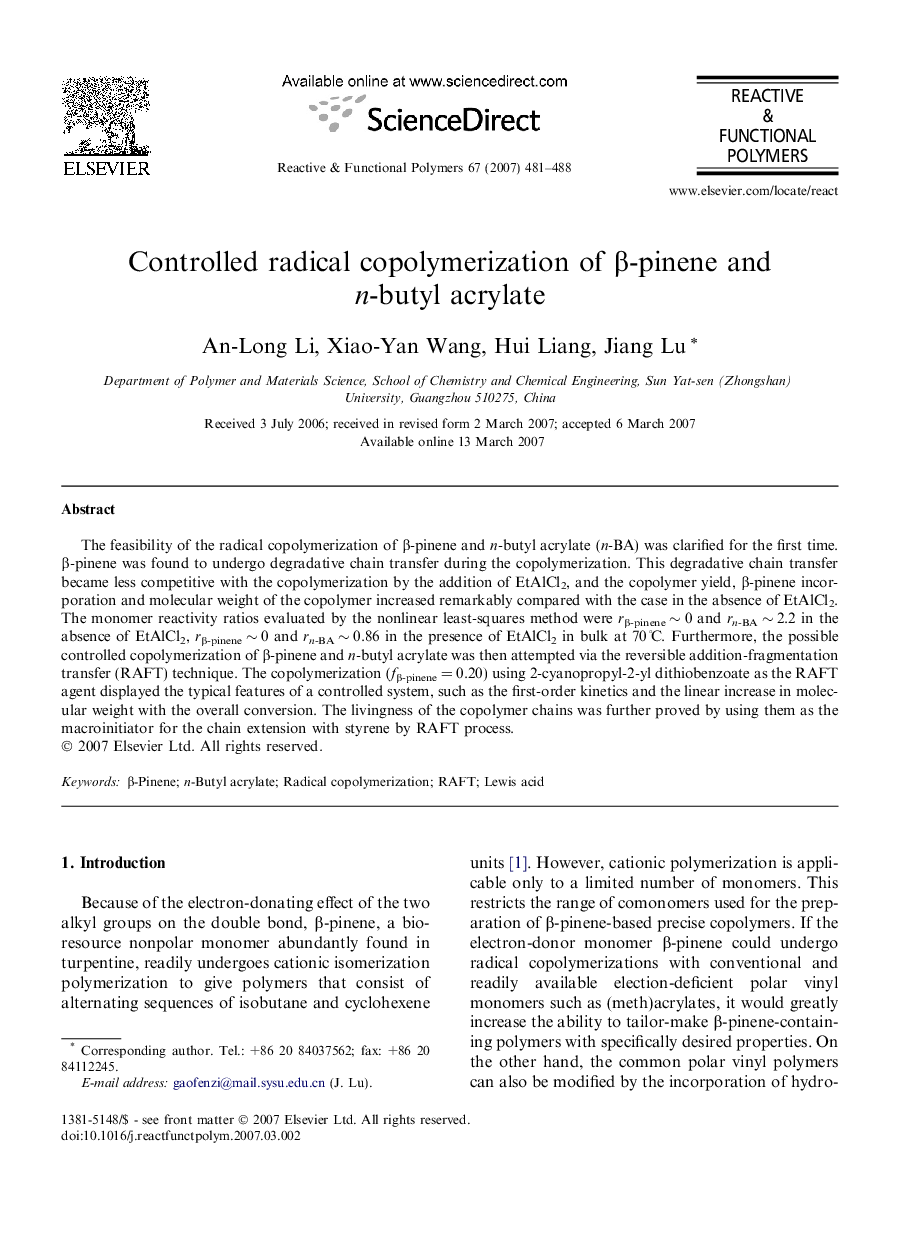| Article ID | Journal | Published Year | Pages | File Type |
|---|---|---|---|---|
| 5211291 | Reactive and Functional Polymers | 2007 | 8 Pages |
Abstract
The feasibility of the radical copolymerization of β-pinene and n-butyl acrylate (n-BA) was clarified for the first time. β-pinene was found to undergo degradative chain transfer during the copolymerization. This degradative chain transfer became less competitive with the copolymerization by the addition of EtAlCl2, and the copolymer yield, β-pinene incorporation and molecular weight of the copolymer increased remarkably compared with the case in the absence of EtAlCl2. The monomer reactivity ratios evaluated by the nonlinear least-squares method were rβ-pinene â¼Â 0 and rn-BA â¼Â 2.2 in the absence of EtAlCl2, rβ-pinene â¼Â 0 and rn-BA â¼Â 0.86 in the presence of EtAlCl2 in bulk at 70 ËC. Furthermore, the possible controlled copolymerization of β-pinene and n-butyl acrylate was then attempted via the reversible addition-fragmentation transfer (RAFT) technique. The copolymerization (fβ-pinene = 0.20) using 2-cyanopropyl-2-yl dithiobenzoate as the RAFT agent displayed the typical features of a controlled system, such as the first-order kinetics and the linear increase in molecular weight with the overall conversion. The livingness of the copolymer chains was further proved by using them as the macroinitiator for the chain extension with styrene by RAFT process.
Related Topics
Physical Sciences and Engineering
Chemistry
Organic Chemistry
Authors
An-Long Li, Xiao-Yan Wang, Hui Liang, Jiang Lu,
